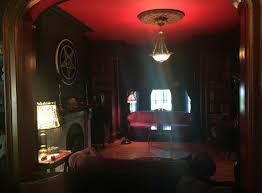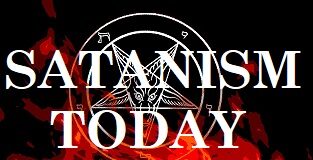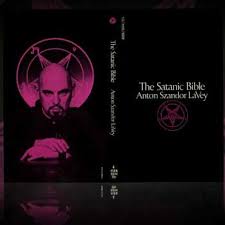 The Church of Satan has long been a subject of curiosity and intrigue, captivating those who seek to understand its enigmatic history and complex evolution.
Since its inception in the 1970s under the charismatic leadership of Anton LaVey, the Church has undergone significant transformations, reflecting broader shifts in societal attitudes towards alternative spiritual paths.
This article dives into the history of the Church of Satan, delving into pivotal events and exploring the evolution of Satanic practices over the decades. Whether you’re a history enthusiast or simply curious about this unique religious movement, join us as we unravel the fascinating Satanism timeline and gain insights into how the Church of Satan has continued to adapt and thrive in a changing world.
The Church of Satan has long been a subject of curiosity and intrigue, captivating those who seek to understand its enigmatic history and complex evolution.
Since its inception in the 1970s under the charismatic leadership of Anton LaVey, the Church has undergone significant transformations, reflecting broader shifts in societal attitudes towards alternative spiritual paths.
This article dives into the history of the Church of Satan, delving into pivotal events and exploring the evolution of Satanic practices over the decades. Whether you’re a history enthusiast or simply curious about this unique religious movement, join us as we unravel the fascinating Satanism timeline and gain insights into how the Church of Satan has continued to adapt and thrive in a changing world.
The Rise of Anton LaVey
The Church of Satan’s creation is tied to its charismatic founder, Anton LaVey. Let’s explore the pivotal moments that led to the establishment of the Church and the development of its core philosophy.
Anton LaVey officially founded the Church of Satan on April 30, 1966, in San Francisco, California. This date, known as Walpurgisnacht in occult traditions, was chosen for its symbolic significance.
LaVey’s self-professed background in carnival work and his studies of the occult and human nature played a crucial role in shaping the Church’s early identity. He transformed his home, dubbed the “Black House,” into the Church’s headquarters, creating a mystical and theatrical atmosphere that attracted both curious seekers and media attention alike.
The Church’s founding marked a significant departure from traditional religious institutions, offering a philosophy that celebrated individualism and rejected conventional morality. This bold stance quickly garnered both fervent followers and vehement critics, setting the stage for the Church’s controversial journey through the decades.
Establishing A Satanic Philosophy
LaVey codified the Church of Satan’s philosophy in “The Satanic Bible,” published in 1969. This seminal work laid out the fundamental principles of LaVeyan Satanism, which differed significantly from traditional notions of devil worship. Some of these philosophies included emphasis on individualism and personal responsibility, and the rejection of the moral restraints of the era through a celebration of human desires and instincts.
LaVey’s philosophy drew inspiration from various sources, including Friedrich Nietzsche, Ayn Rand, and social Darwinism. He crafted a worldview that challenged conventional religious and social norms, appealing to those seeking an alternative spiritual path.
The establishment of this unique philosophy set the Church of Satan apart from other occult organizations and religious movements, creating a foundation for its continued influence in the decades to come.
As the Church of Satan grew and developed, its practices and rituals evolved, reflecting both its core philosophy and the changing cultural landscape.
Rituals and Ceremonies of the Church of Satan
The Church of Satan’s rituals and ceremonies are designed to be symbolic expressions of its philosophy, serving both as a psychological tool for practitioners and a performative spectacle for observers. These rituals often incorporate theatrical elements, drawing from LaVey’s background in showmanship.
The Black Mass: One of the most famous Satanic rituals, the Black Mass, is not a literal inversion of a Christian Mass but rather a satirical performance meant to critique religious dogma. It emphasizes personal empowerment and the rejection of guilt imposed by traditional religions.
Greater Magic: These rituals are intended to focus the practitioner’s will to achieve specific outcomes. They often incorporate dramatic elements such as chanting, music, and the use of ritual paraphernalia like the chalice, sword, and bell.
Lesser Magic: Unlike Greater Magic, which involves formal ceremonies, Lesser Magic is practiced in daily life. It involves the application of psychological and manipulation tactics to influence others and achieve personal goals.
Cultural Impact and Misunderstandings
The Church of Satan’s practices have often been misunderstood and sensationalized by the media, contributing to the so-called “Satanic Panic” of the 1980s and early 1990s. During this period, widespread fear and paranoia about  Satanic cults that engaged in criminal activities led to numerous false accusations and moral panic.
Satanic cults that engaged in criminal activities led to numerous false accusations and moral panic.
Despite this, the Church of Satan has continually clarified its stance as an atheistic organization devoid of any criminal or harmful intentions. Membership and public interest have remained robust, driven in part by the Church’s strategic embrace of publicity and controversy as tools for cultural commentary and personal empowerment.
In recent years, the Church of Satan has adapted to a rapidly changing societal landscape. It continues to maintain an active presence both online and offline, engaging with new generations who are drawn to its principles of individualism and critical thinking.
Leadership and Legacy in the Church of Satan
Following Anton LaVey’s death in 1997, leadership of the Church passed to high-ranking members who have upheld his vision. The organization remains firm in its original philosophy, stating that it is a religion for skeptics, atheists, and those who reject traditional spiritual constructs.
 The Church has also expanded its influence globally, with international members contributing to its ongoing dialogue about Satanism in contemporary society. This global reach underscores the adaptability of LaVey’s teachings to diverse cultural contexts.
The Church has also expanded its influence globally, with international members contributing to its ongoing dialogue about Satanism in contemporary society. This global reach underscores the adaptability of LaVey’s teachings to diverse cultural contexts.
Today, the Church of Satan engages with broader cultural and social issues, using platforms like social media to articulate its views on topics like freedom of expression, personal autonomy, and the critique of mainstream religious practices.
In conclusion, the Church of Satan has navigated decades of controversy, cultural shifts, and evolving societal norms to remain a distinctive and enduring presence in the world of new religious movements. Through its steadfast commitment to its foundational principles and its willingness to adapt, it continues to intrigue and challenge perceptions, inviting new generations to explore its complex and often misunderstood philosophy.
Read more Satanism Today News or visit the Satanism Today Articles Index If you liked this post, please share:
Satanism is an ever changing social movement. This site brings you the past, present and future of Satanism today. Written with an unbiased, nonpartisan view for the education of all. Knowledge is power!


